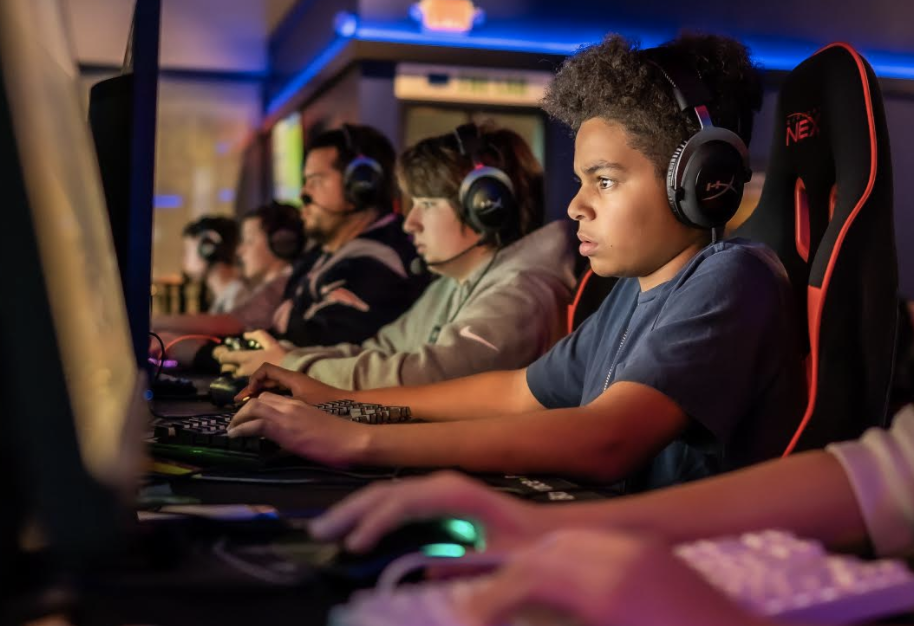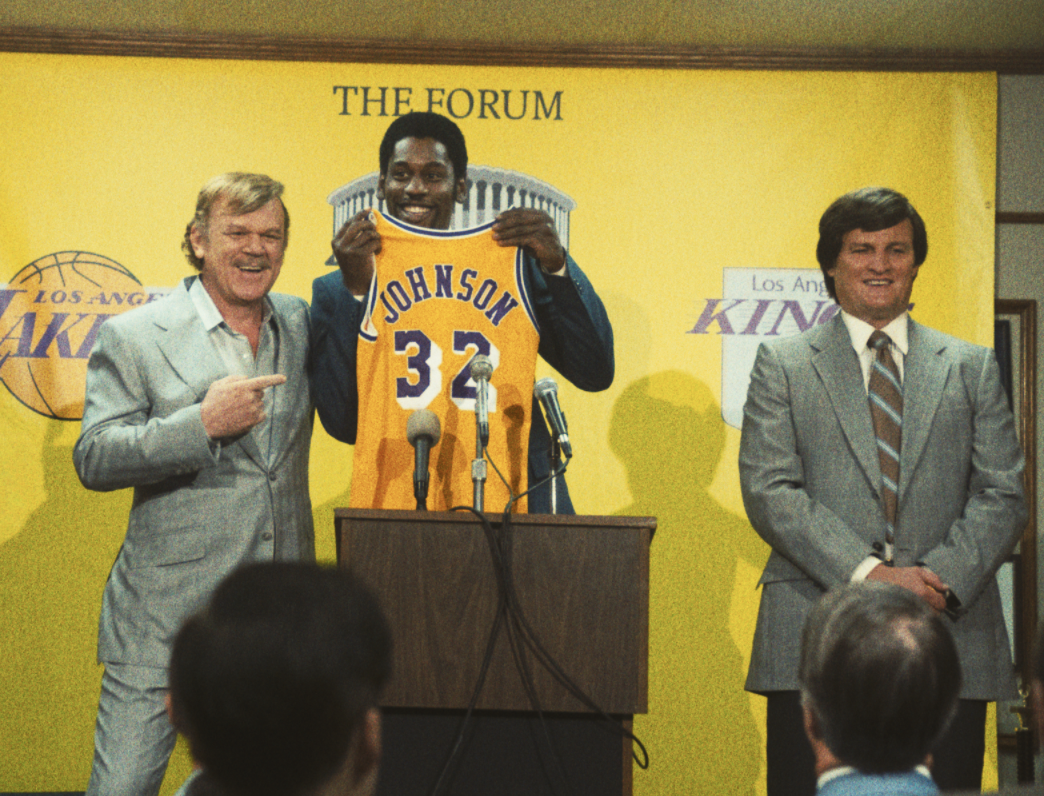Connell Schneider wore his green and blue team jersey as he sat in the player’s practice area. Reviewing data, video and talking with his coaches, the 14-year-old teen from Duxbury, Massachusetts went over his game plan in his head, thinking on how to best approach his team’s opponent.
But Schneider’s arena isn’t a typical gym or field. Instead, the teenager competes from a gaming chair at Uptime Esports, a new youth esports-specific training facility in Hanover, Massachusetts. Surrounded by state-of-the-art gaming stations, high-definition video screens, and countless bundles of wires and cables, Uptime resembles something out of the movie “The Matrix” more than a sporting facility.
Uptime is part of the leading edge of the booming esports industry, an industry where billions are gaming and millions are watching them play. A burgeoning media market is forming that could disrupt the way fans of all sports pay for, watch, and consume entertainment and the next generation of sportscasters—covering gaming or otherwise—could be operating from basements and spare bedrooms.
“We are the game changers,” said Uptime Co-Founder Sean Quinn. “We are going to be the disrupters.”

A new approach to gaming
In 2019, NewZoo, a leading gaming and esports analytics firm, reported that there are now more than 2.5 billion gamers across the world that will spend $152.1 billion on games this year alone. That number represents what people are paying to play video games. But there is also a growing market for those who want to watch people play video games. StreamElements, another gaming analytics firm, reported that there were over 3.77 billion (yes, billion) total hours watched in just the second quarter of 2019.
Although gaming can conjure up images of a basement-lurking adolescent with a Mountain Dew in one hand, a joystick in the other, and a bag of Doritos within close reach, Uptime is looking to shatter those perceptions. The company operates a program that mirrors traditional club sports like soccer and basketball, where players join a team, have practices during the week, and compete in matches and tournaments on weekends.
The company has also created an entire broadcast training center that includes a structured, hands-on curriculum with multiple levels, moving from introductory topics such as creating and promoting videos to an advanced 16-week program. The advanced program involves working with a team to produce and broadcast an entire esports production, including providing play-by-play of tournaments.
Real-life skills at a very young age
Chris Vocelka of Pembroke, Massachusetts moved from Omaha to become Uptime’s broadcast coordinator. Having spent the past eight years as an instructor at Bellevue University in Nebraska, Vocelka was hired to create a program that trains kids like Schneider to capitalize on this new area of sports production.
“I just want the kids to be excited,” Vocelka said. “I want to teach them how to take a hobby and turn it into a business—be an entrepreneur.”

Vocelka believes that Uptime’s curriculum is “as good as or better than” a trade school and that, at a young age, graduates will have the skills they need to compete for paying jobs or launch their own venture before completing high school. At 14, Schnieder is already proficient in Adobe Photoshop, Premiere Pro, After Effects and Apple’s Final Cut Pro. More importantly, he is learning how to promote himself via YouTube and other online platforms, all without ever taking a course in marketing or journalism.
“The biggest difference [compared to traditional broadcasting] is that you can do it from your home,” Vocelka said. “It’s so much more streamlined to go into esports than the traditional route into broadcasting.”
Show me the money…maybe
The revenue trajectory of esports has been exponential, with teens and young adults making more in one year than many Americans make in a lifetime.
In 2019, 16-year-old Kyle “Bugha” Giersdorf won $3 million at the Fortnite World Cup as 23,000 paying spectators watched live at Arthur Ashe Stadium in New York (an estimated 2 million more watching online). By comparison, 33-year-old Rafael Nadal, considered by many to be the world’s best professional tennis player, won $3.85 million on the same court six weeks later at the U.S. Open.
Then there is 28-year-old Tyler “Ninja” Blevins, who has been earning over $6 million per year from people watching him play video games as he provides play-by-play and offers tips to his followers. Much of this viewership comes from streaming sites like Twitch, an Amazon-owned company that holds over 75% of the streaming marketplace. He has been on The Tonight Show and Ellen, and was featured on the cover of the former ESPN: The Magazine.
Not everyone is gaming for fame and fortune, however.Alexander Arcasoy is an undergraduate engineering student at Northeastern who has dipped his toe into the world of streaming. He spends about eight hours per week streaming, and has made only a few hundred dollars online— a far cry from the millions earned by some of the more prominent streamers. Yet, Arcasoy sees a positive in the unique access and intimacy of esports, especially for people who love gaming and professional sports.
“It’s a little like watching an NBA game,” he said. “Almost like you’ve got a personal feed into LeBron James’ home court while he is practicing.”

Moving from the basement to the Olympics
Whether esports and gaming will ever earn a seat at the table with basketball or soccer will likely remain open for debate for years to come. But, the fact that they are producing viable and lucrative business opportunities and changing the way sports are covered is undeniable. With billions playing and millions watching online, esports has gained the attention of major networks like Turner, ESPN, and ABC, each attempting to incorporate esports coverage into their programming schedule. In addition, Esports are currently included in the X Games and are also in the discussion for the 2024 Olympics in Paris, where they would share the stage with mainstream athletes from around the globe.
The once-towering barriers to entry in sports broadcasting are being reshaped at the hands of teenage esports gurus like Schneider. With the computer skills and gaming expertise taught at Uptime and other esports centers around the world, a new generation of communication experts is emerging and they don’t need a press box, media credentials, or an elaborate studio. Instead, with nothing more than a headset, computer, and internet connection, they are reaching millions of viewers from the comfort of their living rooms.
“Some people don’t really understand it,” said Schneider. “They see sports as a physical activity. They don’t see the strategy and time it takes to be good. It’s brainpower.”



